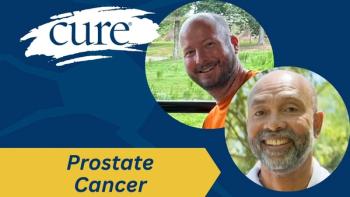
With Few Financial Options, Cancer Patients Turn to Crowdfunding
How the high cost of cancer leaves many choosing between physical, financial and emotional health.
In so many ways, cancer is insatiable. In 2015, for example, the disease claimed more than 600,000 lives, amounting to 8.7 million person years of lost life in the United States alone—that’s 8.7 million years that would have been lived out by loved ones, friends and colleagues if not for the disease.
Cancer can also bring crushing financial consequences. According to
Healthcare’s Crowdfunding Phenomenon
As cancer takes hold and financial options shrink, many diagnosed patients in the US are turning to online crowdfunding to soften the financial blow and make a last-ditch effort at making ends meet.
For Benjamin Breyer, M.D., an associate professor at the University of California, San Francisco and the lead author of the study, mapping and understanding the crowdfunding phenomenon is an important step in the journey toward increasing advocacy for reduced healthcare costs.
Understanding Patient Crowdfunding
“I became really interested in hearing some of these people’s stories,” Breyer said in an interview with CURE. “The more we read their narratives and understood what they were going through, it really stood out to us that for a lot of people, getting care for cancer can be financially devastating. Deductibles are incredibly high, travel for therapies is extremely expensive.”To better understand the patient crowdfunding phenomenon, Breyer and colleagues used search queries on GoFundMe.com to pinpoint a total of 37,344 cancer campaigns between May 2010 (the site’s initial launch date) and October 2018. Using a randomizer, they selected 1,035 campaigns to study in detail by combing through fundraiser narratives (the stories people tell to explain why they need monetary support) for information about a patient’s age, employment status, cancer type, treatment plans, prognosis and how they plan to use any donated funds.
The authors found that 41% of patients (424 total) planned to use the funds to pay for medical bills, roughly 25% (262 patients) would offset the cost of medical travel and about 23% (240 patients) intended to pay off other bills that mounted presumably due to lost time at work, lost employment or diversion of funds to their treatments. Finally, about 2% of patients (18 total) would use their funds to pay for alternative medicine treatments.
The median value of campaign requests was $10,000, meaning half of the campaigns in the study requested more money and half requested less. The median funding that campaigns received independent of asking price was $2,125. “No matter what you asked for, you typically only got about 25% of that ask,” Breyer explained, adding that the 25% fulfillment figure held true whether a person claimed they were insured, underinsured or uninsured, even though underinsured patients asked for $10,000 more on average than campaigns whose fundraisers didn’t mention insurance.
Circumstances appeared to be more challenging for fundraisers who said they were underinsured. Compared to those who didn’t mention insurance, underinsured patients were 10% more likely to report unstable employment and 10% more likely to mention having undergone prior surgical treatments.
What Patient Crowdfunding Tells Us About Society
“I don’t think people that are well off are going to turn to GoFundMe, I think they’ll have the resources in place to cover these kinds of things,” Breyer said. “These [campaigns] definitely point to people that could really use the financial help for various reasons.”Breyer’s study offers a small but meaningful glimpse into the monumental financial challenges facing so many of the 1.7 million patients who are newly diagnosed with cancer each year in the United States—especially those who are under- or uninsured. Despite a reduction in the uninsured rate following the Affordable Care Act, cost containment measures have not been realized by many patients, who continue to report multiple competing financial needs including unpaid medical bills, copays, out-of-pocket drug costs, high deductibles and medical travel, study authors reported.
“One thing to note about cancer care is that it’s not elective. You typically have to have it because it’s often providing lifesaving care,” Breyer said.
That puts patients in a tough position—one where they might find themselves managing a tug of war between physical, financial and emotional health. So, should cancer care really be so expensive that people need to resort to crowdfunding—asking family, friends and strangers to help them financially navigate a serious illness?
“In my opinion, it shouldn’t have to be that way.” Breyer said, recounting how infuriating and sad it has been to watch his patients struggle financially while managing their illnesses. “The very fact that it hasn’t been solved after decades of trying indicates just how big and gnarly a problem it is. But I would implore people to advocate and to talk to government about solutions that are high value, that allow for people not to have to go bankrupt, not to have to skip care altogether, just because they can’t afford it.”
Follow




